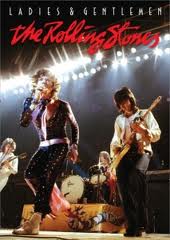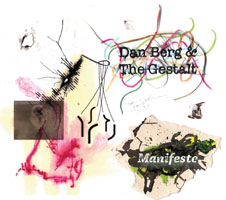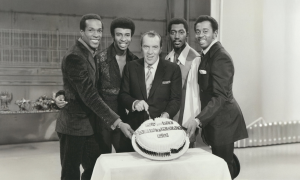Home » Jazz Articles » Film Review » The Rolling Stones: Ladies & Gentlemen The Rolling Stones
The Rolling Stones: Ladies & Gentlemen The Rolling Stones

The Rollling Stones
Ladies & Gentlemen The Rolling Stones
Eagle Vision
2010
In surmounting the difficulties arising from recording the album Exile on Main Street (Rolling Stones, 1972) and the hasty prep work necessary for its release, the Rolling Stones must have known it had something unique to decide to make a movie from the tour to support it. After all, it didn't go to such lengths when it returned to the road back in 1969, from whence came Get Your Ya Ya's Out (London/Abcko,1970). Viewing the DVD of Ladies & Gentlemen The Rolling Stones bears out the unerring accuracy of the group's instincts.
The Stones have never been a better band than the one that hit the road in summer of 1972 and it may have never been so directly in the spotlight as during those months either. After all, this was before the days of the mega-rock and roll tour (this perhaps the first of that scope) and its contemporary rivals Bob Dylan and The Beatles were at a low profile and no longer a band, so singer Mick Jagger, guitarist Keith Richards and company commanded attention like never before (and arguably never since).
Whatever drawbacks arise from the technology of the times (despite remastering from multi-track tapes), both audio and video-wise, are moot when absorbing the performance content here. Taken from four different stops in Texas, the presentation may not be tremendously creative, but the various segments from different shows are smoothly interwoven, without editing clashes of any kind. From the very start of the ever-so-appropriate opener "Brown Sugar," it's clear we're seeing the rolling Stones, upon which all the stereotypes are based. Jagger's glittered androgyny with a vengeance is the animated elemental from which caricatures arise, while the intensity of Richards' focus is channeled strictly through his guitar (though he's really no less of a peacock in his attire, scarf and all).
By the half-way point of the "Bitch" that follows, the frontman often becomes a distraction from the music action going on around him, pelvic and derriere thrusts and all (his between song patter is mercifully brief throughout). Fleeting shots of guitarist Mick Taylor appear and not always when he's soloing, while equally quick cuts reveal the joy drummer Charlie Watts exhibits whacking away. The horns of trumpeter Jim Price and saxophonist Bobby Keys escalate to an earthy majesty here, while the latter's solos reveal how the Stones were able to replicate live the not quite clean mix of instruments that made Exile and, in truth, its predecessors Let It Bleed (London/Abkco, 1969) and Sticky Fingers (Rolling Stones, 1971) so distinctive.
Nevertheless, the theatre here is undeniable and not just when Jagger and Richards share a microphone on the ersatz country tune "Dead Flowers." While bassist Bill Wyman is as unobtrusive visually as he is sonically, and the brilliant pianist Nicky Hopkins might just as well be invisible, what's on display here is a supremely confident musical unit at the height of its powers and well aware of it. No doubt the musicians are well-rehearsed and the stage production equally prepared in its sophistication, but there remains a spontaneity that informs this music that takes it to an even higher level of electricity, even though little improvisation occurs besides set solos.
The new material, such as the languorous "Tumblin' Dice" and the exultant Richards vehicle "Happy," comes across as true and raunchy as "Rip This Joint" in all its frenetic glory. The musicianly instincts of the Stones are as alive on stage in the studio as the set unfolds: mid-point finds a relatively low-key interval including the blues of Robert Johnson's "Love in Vain" and the balladry of "You Can't Always Get What You Want," before a final burst of speed and intensity kicks in through "All Down the Line" and "Midnight Rambler." While all this comes naturally to the group, it's working hard to make it all happen and the expenditure is obvious from the free-flowing perspiration that causes layers of clothing to be doffed as the show progresses, to the pinpoint accuracy of Taylor's nasty notes (those in contrast to his angelic stoicism).
During the latter, Jagger again becomes a focal point to the detriment of the music, not to mention the rest of the band—despite the overt blues overtones that arise from the arrangement—but he has to get out of the way of a veritable juggernaut during "Jumpin' Jack Flash" and "Street Fighting Man:" arguably two of the greatest of all Stones rock tunes, this septet gives them a power every bit on par with the opening of the show, a remarkable statement to make given the anticipation at hand.
Ladies & Gentlemen The Rolling Stones documents a point in this quintessential rock group's career where it not only met but exceeded the expectations of its audience and the public at large. The tour filled pages in each issue of Rolling Stone magazine for its duration, and while much of the coverage was the tawdry sort than chronicled the hangers on such as Truman Capote and Margaret Trudeau, wife of the then Canadian prime minister, that was simply a testament to how the elevated musical stature of the Stones had translated to celebrity status without undermining the authenticity of its approach to its music.
No more lengthy than they are insightful, the bonus features included on the disc nevertheless suggest the sources of authenticity as well as the professionalism at the heart of the Stones as a band, particularly in the instrumental "Bluesberry Jam." Tour rehearsal footage finds the Stones playing bereft of showmanship, except for Jagger, whose facial and physical contortions are as much as natural reaction to the sound around him as the bobbing and swaying of Richards as he plays.
Over the four decades plus the Rolling Stones have been together, Mick Jagger has learned to parlay an ego that craves attention into marketing savvy, but in both the 1972 and 2010 interview footage, he does display a certain self-effacing charm. Certainly more clear-eyed and clear-headed in the latter than in the former, it is to his credit as well that he radiates such a genuine interest in the work of the band and the effort required, as with this project, to bring it up to date. It might be fair to say he's one of the Stones' biggest fans and watching Ladies & Gentlemen The Rolling Stones, it's easy to see why.
Tracks: Brown Sugar; Bitch; Gimme Shelter; Dead Flowers; Happy; Tumbling Dice; Love In Vain; Sweet Virginia; You Can't Always Get What You Want; All Down The Line; Midnight Rambler; Bye Bye Johnny; Rip This Joint; Jumpin' Jack Flash; Street Fighting Man.
Personnel: Mick Jagger: vocals, harp; Keith Richards: guitar, vocals; Mick Taylor: guitar; Bill Wyman: bass; Charie Watts: drums; Nicky Hopkins: piano; Jim Price: trumpet; Bobby Keys: saxophone.
Production Notes: 110 minutes. Bonus features include: Tour rehearsal footage from Montreux; 1972 Old Grey Whistle Test interview with Mick Jagger; 2010 interview with Mick Jagger.
Tags
The Rolling Stones
DVD/Film Reviews
Doug Collette
Kayos Productions, Inc.
United States
Bob Dylan
The Beatles
Mick Taylor
Charlie Watts
PREVIOUS / NEXT
Support All About Jazz
 All About Jazz has been a pillar of jazz since 1995, championing it as an art form and, more importantly, supporting the musicians who make it. Our enduring commitment has made "AAJ" one of the most culturally important websites of its kind, read by hundreds of thousands of fans, musicians and industry figures every month.
All About Jazz has been a pillar of jazz since 1995, championing it as an art form and, more importantly, supporting the musicians who make it. Our enduring commitment has made "AAJ" one of the most culturally important websites of its kind, read by hundreds of thousands of fans, musicians and industry figures every month.




















